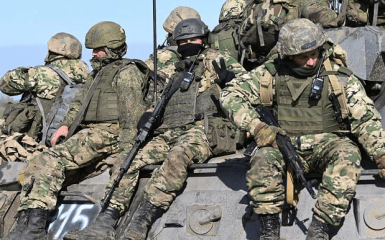Experts at the Institute for the Study of War (ISW) have noted several Russian financial, economic and military indicators that suggest Russia is preparing for a full-scale conflict with NATO sooner than some Western analysts initially thought.
Which shows that Russia is preparing for war with NATO
Economic factor. Experts note that on March 19, Vladimir Putin held a meeting with the leaders of the factions of the State Duma of the Russian Federation and outlined priorities for his fifth presidential term.
He called on leaders of Russian State Duma factions to act in the state's interests, not corporations or parties. He emphasised the importance of appointing people based on qualifications and competence.
Putin is likely trying to set the stage for stabilising Russia's long-term financial position at a higher level of government spending, and is signaling that Russia's long-term financial stability will require at least some discomfort from wealthy industrialist power elites.
Putin probably realises that financial repression against industrialist security forces could jeopardise the political relationship Putin has built with them and is trying to mitigate those consequences.
Russia continues to try to circumvent international sanctions, and the International Monetary Fund estimated that Russia's GDP would grow by 2.6% in 2024 and reported that Russia's GDP grew faster than all the G7 economies in 2023.
Financial factor. Russia's significant conventional military threat depends largely on Putin's willingness to use financial resources to counter the military effort.
Putin's attempts to establish conditions for the stabilisation of Russia's economy and finances are most likely part of Russia's financial and domestic preparations for a possible future large-scale conflict with NATO, not just for a protracted war in Ukraine.
The military factor. As experts note, the Russian military continues to pursue structural reforms to simultaneously support the war against Ukraine while simultaneously expanding Russia's long-term conventional capabilities in preparation for a potential future full-scale conflict with NATO.
On March 20, Russian MOD chief Sergei Shoigu spoke at the Ministry of Defence of the Russian Federation collegium and announced that Russia had formed the "Dnipro River Flotilla" and a "brigade" of boats as part of the flotilla.
The Dnipro River Flotilla will likely be deployed alongside the Dnerp Grouping Forces in the Kherson region. It will defend against Ukrainian raids across the river and counter Ukraine's efforts to maintain a limited presence in the left-bank Kherson region.
Shoigu outlined several ongoing efforts to strengthen Russia's conventional military capabilities, more likely as part of Russia's long-term efforts to prepare for a potential conventional war with NATO than as part of a war against Ukraine.
Shoigu said Russia has formed an army corps and a motorised rifle division.
Shoigu also claimed that the Russian military plans to form two combined armies, 14 divisions, and 16 brigades by the end of 2024.
ISW continues to assess that Russia lacks the manpower, military infrastructure, and training capacity to adequately staff several brand-new divisions in army-level formations to full strength shortly.
Current personnel changes in the Russian Defense Ministry may be additional indicators of Russia's preparation for conflict in the long term.
What they say in the West
ISW writes that Polish President Andrzej Duda, in an interview with CNBC on March 20, emphasised that Putin is stepping up efforts to transfer Russia to a war economy to attack NATO as early as 2026 or 2027, citing unspecified German research.
Danish Defense Minister Troels Lund Poulsen said on February 9 that new intelligence indicates that Russia could try to attack a NATO country within three to five years, which is an accelerated time frame according to NATO's estimate of 2023.




